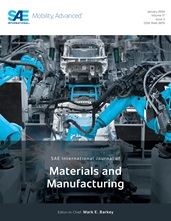For the heat dissipation design of charging equipment for electric vehicles, a
study is conducted on the thermal performance and its influencing factors of a
specific alternating current (AC) charging device. First, based on heat
dissipation theory and CFD simulation software, the corresponding finite element
model is established and verified through experiments. Next, using the verified
finite element model and applying the orthogonal experimental method, the
factors influencing the heat dissipation performance of the AC charging pile,
such as ambient temperature, output current of the AC charging pile, and surface
radiation characteristics, are investigated. Finally, a prediction model for the
maximum temperature of the main board is established using the response surface
method (RSM), and the effects of each factor on the maximum main board
temperature are analyzed, enabling rapid prediction of the heat dissipation
performance of the AC charging pile. The analysis of the orthogonal experimental
results shows that the ambient temperature, surface radiation characteristics,
and output current all have a significant impact on the heat dissipation
performance of the AC charging pile. Among these factors, the ambient
temperature has the greatest impact, followed by the surface radiation
characteristics, while output current has the least effect. The prediction model
concludes that as the output current of the AC charging pile increases, the
radiative heat dissipation performance improves. For AC charging piles with
higher output power, enhancing the emissivity of the shell surface is an
effective method to improve the thermal performance of the charging pile.
Additionally, the higher the environmental temperature, the greater the impact
of output current on the maximum temperature of the main board. When the
environmental temperature decreases, the output current can be significantly
increased to enhance the charging speed of the AC charging pile.
